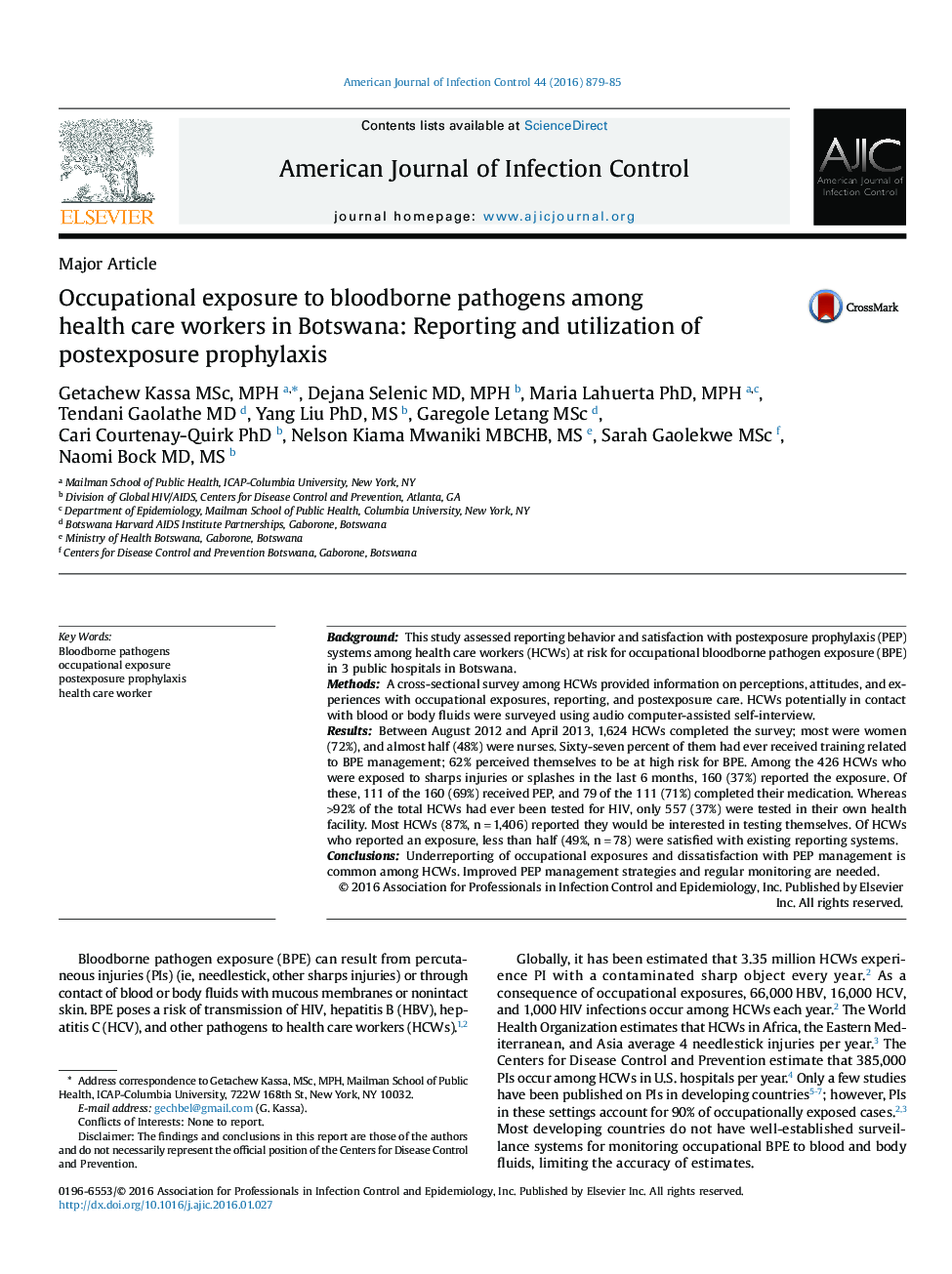| کد مقاله | کد نشریه | سال انتشار | مقاله انگلیسی | نسخه تمام متن |
|---|---|---|---|---|
| 5867194 | 1563455 | 2016 | 7 صفحه PDF | دانلود رایگان |
- Lack of a proper occupational exposure management system exposes health care workers to bloodborne pathogen infection.
- Multicomponent interventions improve occupational exposure reporting and case management.
- Reporting is vital for counseling, treatment, and follow-up of occupational exposures.
BackgroundThis study assessed reporting behavior and satisfaction with postexposure prophylaxis (PEP) systems among health care workers (HCWs) at risk for occupational bloodborne pathogen exposure (BPE) in 3 public hospitals in Botswana.MethodsA cross-sectional survey among HCWs provided information on perceptions, attitudes, and experiences with occupational exposures, reporting, and postexposure care. HCWs potentially in contact with blood or body fluids were surveyed using audio computer-assisted self-interview.ResultsBetween August 2012 and April 2013, 1,624 HCWs completed the survey; most were women (72%), and almost half (48%) were nurses. Sixty-seven percent of them had ever received training related to BPE management; 62% perceived themselves to be at high risk for BPE. Among the 426 HCWs who were exposed to sharps injuries or splashes in the last 6 months, 160 (37%) reported the exposure. Of these, 111 of the 160 (69%) received PEP, and 79 of the 111 (71%) completed their medication. Whereas >92% of the total HCWs had ever been tested for HIV, only 557 (37%) were tested in their own health facility. Most HCWs (87%, nâ=â1,406) reported they would be interested in testing themselves. Of HCWs who reported an exposure, less than half (49%, nâ=â78) were satisfied with existing reporting systems.ConclusionsUnderreporting of occupational exposures and dissatisfaction with PEP management is common among HCWs. Improved PEP management strategies and regular monitoring are needed.
Journal: American Journal of Infection Control - Volume 44, Issue 8, 1 August 2016, Pages 879-885
